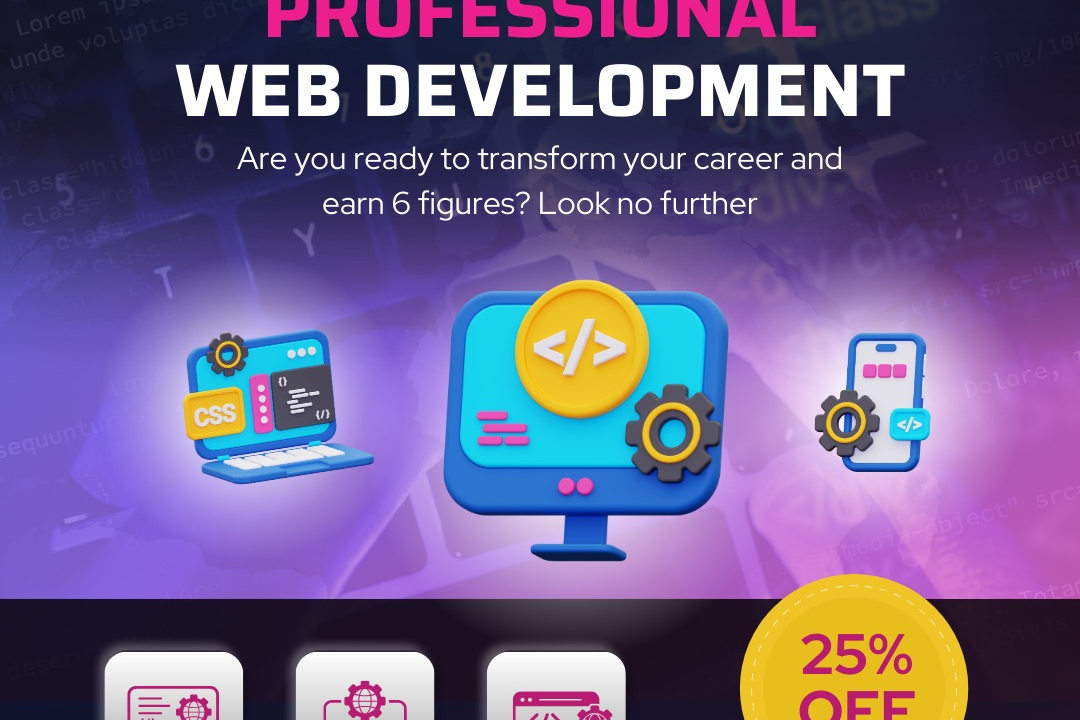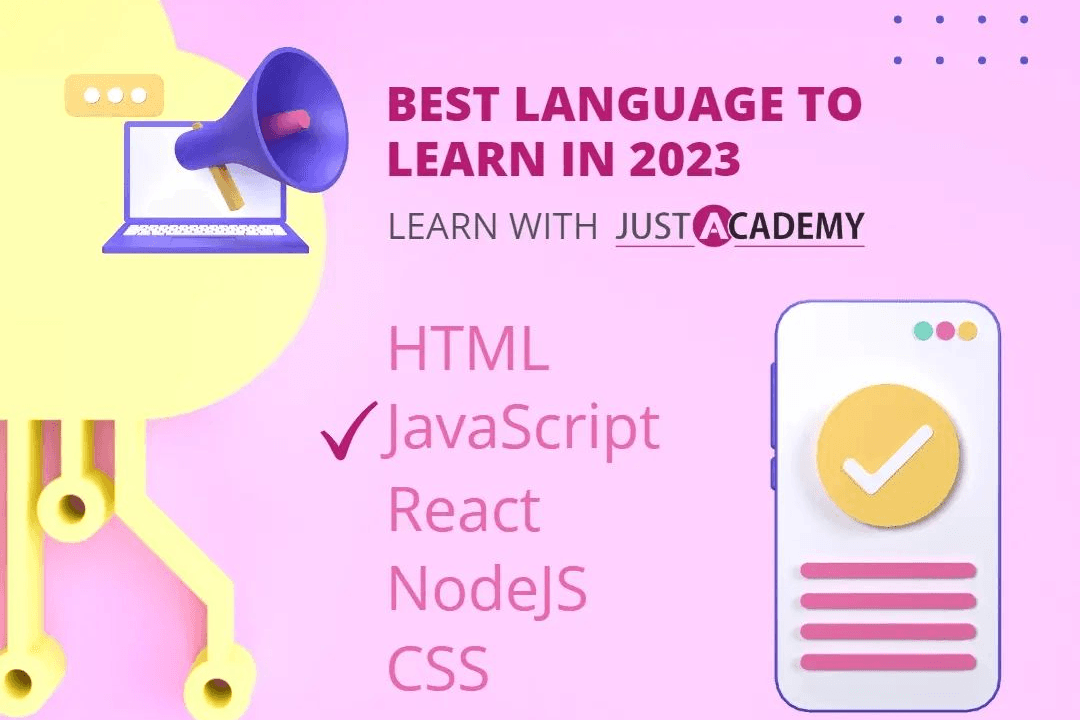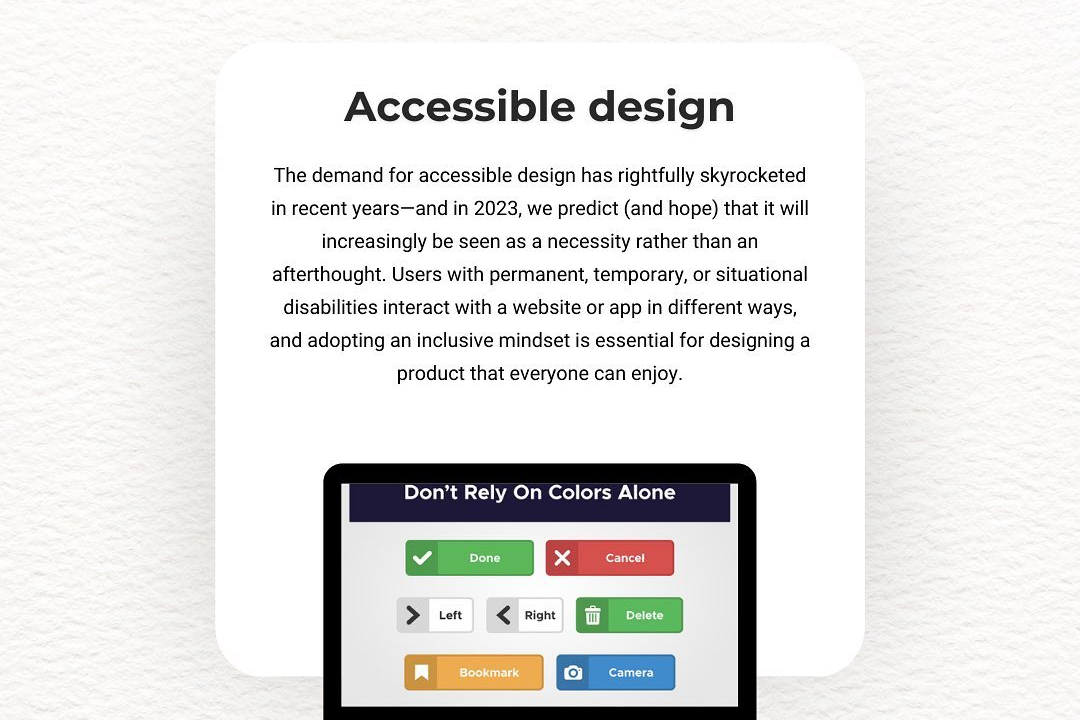How Run Php Basic Program
Running a basic PHP program involves writing PHP code within a file with a `.php` extension and then
How Run Php Basic Program
Running a basic PHP program is essential for developing dynamic websites and web applications, as PHP enables server-side scripting that interacts with databases and generates customized content. By creating simple PHP scripts and executing them through a local server environment, developers can test and validate their code efficiently before deploying it live. This process is useful for learning core programming concepts, experimenting with functionality, and building scalable projects, making PHP a powerful tool for creating interactive and data-driven web solutions.
To Download Our Brochure: https://www.justacademy.co/download-brochure-for-free
Message us for more information: +91 9987184296
Running a basic PHP program is essential for developing dynamic websites and web applications, as PHP enables server side scripting that interacts with databases and generates customized content. By creating simple PHP scripts and executing them through a local server environment, developers can test and validate their code efficiently before deploying it live. This process is useful for learning core programming concepts, experimenting with functionality, and building scalable projects, making PHP a powerful tool for creating interactive and data driven web solutions.
Course Overview
The ‘How to Run PHP Basic Program’ course teaches you how to write, execute, and test simple PHP scripts using local server environments. It covers setting up tools like XAMPP or WAMP, creating your first PHP file, and understanding core syntax and concepts. Ideal for beginners, this course provides a solid foundation for developing dynamic web pages and understanding PHP workflow.
Course Description
Learn to write, run, and test basic PHP programs using local servers like XAMPP or WAMP. This course guides beginners through setup, syntax, and execution of simple PHP scripts to build a strong foundation in PHP programming.
Key Features
1 - Comprehensive Tool Coverage: Provides hands-on training with a range of industry-standard testing tools, including Selenium, JIRA, LoadRunner, and TestRail.
2) Practical Exercises: Features real-world exercises and case studies to apply tools in various testing scenarios.
3) Interactive Learning: Includes interactive sessions with industry experts for personalized feedback and guidance.
4) Detailed Tutorials: Offers extensive tutorials and documentation on tool functionalities and best practices.
5) Advanced Techniques: Covers both fundamental and advanced techniques for using testing tools effectively.
6) Data Visualization: Integrates tools for visualizing test metrics and results, enhancing data interpretation and decision-making.
7) Tool Integration: Teaches how to integrate testing tools into the software development lifecycle for streamlined workflows.
8) Project-Based Learning: Focuses on project-based learning to build practical skills and create a portfolio of completed tasks.
9) Career Support: Provides resources and support for applying learned skills to real-world job scenarios, including resume building and interview preparation.
10) Up-to-Date Content: Ensures that course materials reflect the latest industry standards and tool updates.
Benefits of taking our course
Functional Tools
1 - XAMPP/WAMP/LAMP Server Packages
These comprehensive server solutions provide Apache, MySQL, PHP, and other essential components bundled together. They allow students to easily set up a local web server environment on their computers without complicated configurations. XAMPP is cross platform and compatible with Windows, Linux, and Mac OS, making it accessible for all students. WAMP is specifically for Windows, offering a user friendly interface to manage server settings. LAMP (Linux, Apache, MySQL, PHP) is tailored for Linux users and often used in professional environments. Using these tools, students can run PHP scripts locally, develop web applications, and test functionalities in a controlled environment, thereby gaining practical hands on experience essential for aspiring web developers.
2) Text Editors like Notepad++, Sublime Text, Visual Studio Code
A good text editor is crucial for writing clean, efficient PHP code. Notepad++ is lightweight, supports syntax highlighting, and offers plugin support to enhance productivity. Sublime Text is renowned for its speed, customizable interface, and code editing features. Visual Studio Code (VS Code) is a powerful, open source editor with numerous extensions that facilitate debugging, version control, and code completion. These editors enable students to write, edit, and troubleshoot PHP scripts efficiently. They also support features like auto indentation and syntax highlighting, reducing coding errors and improving clarity. Familiarity with these tools helps students transition smoothly into professional development environments and collaborate more effectively.
3) Web Browsers (Google Chrome, Mozilla Firefox, Microsoft Edge)
Web browsers are the primary tools for testing and viewing PHP applications once they are run on a local server. They interpret and display the output generated by PHP scripts, allowing students to verify their code's functionality visually. Modern browsers provide developer tools for examining network requests, debugging scripts, and inspecting elements, which are invaluable for troubleshooting issues. Compatibility testing across multiple browsers ensures that web applications perform consistently for end users. Students learn how to use browser console features to identify and fix front end problems, making browser proficiency a fundamental part of web development training.
4) Command Line Interface (CLI) Tools like Terminal, Command Prompt, or PowerShell
Operating PHP programs via command line allows students to run scripts without setting up a web server, useful for learning PHP syntax and logic quickly. The terminal or command prompt provides direct access to the system’s shell, enabling script execution, file management, and environment control with commands. Using CLI tools simplifies understanding PHP's core functionalities and troubleshooting scripts by observing error messages directly. It also helps students learn essential skills for deployment and automation tasks. Mastery of command line interfaces equips students with a versatile toolset applicable in many professional development workflows.
5) PHP Interactive Shells (php a or PHP interactive mode)
PHP’s interactive mode offers a real time environment where students can write and execute PHP code snippets instantly, without creating full files or scripts. This mode is particularly useful for testing individual functions, understanding language syntax, and experimenting with logic quickly. It accelerates learning by providing immediate feedback and reducing setup time. Students can explore PHP commands, functions, and expressions directly, reinforcing their grasp of the language fundamentals. Using interactive shells enhances problem solving skills and fosters a more engaging, hands on learning experience during training programs.
6) Source Control Systems like Git
Version control systems are vital for managing code changes, collaborating with peers, and maintaining project history. Git allows students to track modifications in their PHP projects, revert to previous versions if needed, and collaborate efficiently with others through repositories hosted on platforms like GitHub or GitLab. Learning to operate Git commands enhances project organization and supports best practices in software development. Students also understand the importance of code backup and change management, which are critical skills in professional settings. Incorporating Git training into PHP programming courses nurtures discipline, accountability, and collaborative expertise essential for modern web development.
7) PHP Documentation and Online Resources
Official PHP manuals, tutorials, and community forums provide extensive information on syntax, functions, and best practices. Students learn to navigate these resources to find solutions, optimize code, and explore advanced features. Access to comprehensive documentation accelerates self learning and problem resolution, fostering independent development habits. Many online platforms also offer video tutorials, example projects, and troubleshooting guides, making learning dynamic and interactive. Familiarity with these tools encourages continuous professional growth and helps students stay updated with the latest PHP advancements, making them more adaptable and resourceful developers.
8) Integrated Development Environments (IDEs) like PHPStorm, Eclipse PDT
IDEs provide an all in one workspace for writing, testing, and debugging PHP code efficiently. With features such as syntax highlighting, code completion, error detection, and debugging tools, IDEs enhance productivity and reduce development time. PHPStorm, for instance, offers integrated tools for version control, database management, and code refactoring, making it suitable for both beginners and advanced learners. Eclipse PDT is an open source alternative with similar functionalities and extendibility. Using IDEs during training enables students to develop professional quality projects and prepares them for industry standard development environments.
9) Database Management Tools (phpMyAdmin, MySQL Workbench)
Since PHP is often used to develop dynamic web applications that interact with databases, learning database tools is crucial. phpMyAdmin offers a user friendly web interface to manage MySQL databases, allowing students to create tables, insert data, and run queries easily. MySQL Workbench provides a more advanced environment for database design, query execution, and server management. These tools prepare students to integrate databases with PHP scripts effectively, understand data structures, and perform essential operations necessary for building real world applications. Familiarity with database management tools is a stepping stone towards full stack development competency.
10) Localhost Testing Platforms with Preconfigured Environments
Preconfigured platforms such as Laragon or MAMP simplify setting up a local server environment optimized for PHP development. They bundle necessary components and often include one click installations, making the process accessible even for beginners. These platforms typically provide a simple interface to switch PHP versions, manage server settings, and organize multiple projects. They help students focus on coding and learning instead of configuring complex server settings. Using these tools during training programs allows for quicker setup times, smoother development workflows, and a more productive learning environment.
11 - Docker Containers for Development Environments
Docker allows students to create isolated, portable development environments tailored for PHP projects. With containerization, students can run consistent setups across different machines, avoiding environment conflicts and configuration issues. Docker images can include all necessary services like PHP, MySQL, and web servers, streamlining project deployment and testing. Learning to utilize Docker enhances skills in DevOps practices, container management, and scalable application deployment, essential for modern web development workflows.
12) Automated Testing Tools (PHPUnit)
Implementing automated testing frameworks like PHPUnit helps students write and execute unit tests for PHP code, ensuring functionality and robustness. This practice promotes writing maintainable, error free code and introduces testing as an integral part of the development cycle. Students learn to identify bugs early, automate repetitive testing tasks, and improve overall project quality—skills highly valued in professional software development environments.
13) Front End Technologies (HTML, CSS, JavaScript) Integration
While PHP handles server side logic, understanding front end technologies is vital for building complete web applications. Students learn how to integrate PHP with HTML, style pages with CSS, and add interactivity using JavaScript. This holistic approach helps them create dynamic, user friendly interfaces and understand full stack development concepts. Practical exercises include form handling, user authentication, and responsive design, preparing students for comprehensive web projects.
14) Deployment Platforms and Cloud Services
Training includes deploying PHP applications on cloud platforms such as AWS, Azure, or shared hosting services. Students learn the deployment process, configuring servers, managing domain names, and ensuring application security. This experience prepares them for real world scenarios where applications are hosted online and accessible globally. Understanding cloud deployment broadens career opportunities and highlights the importance of scalable, secure hosting solutions.
15) Performance Optimization Techniques
Students explore ways to optimize PHP code and web applications, including caching strategies, code refactoring, and database indexing. They learn to monitor and improve load times, reduce server resource consumption, and enhance user experience. These skills are crucial for developing high performance websites capable of handling large traffic volumes, making them more industry ready.
16) Security Best Practices in PHP Development
Training emphasizes protecting applications from common vulnerabilities like SQL injection, cross site scripting (XSS), and session hijacking. Students learn to implement secure coding practices, validation, sanitization, and authentication mechanisms. This knowledge ensures the development of safe, compliant applications and prepares students to address security challenges in real world projects.
17) RESTful API Development
Students learn how to design and implement RESTful APIs using PHP, enabling communication between different software systems. This skill is essential for building scalable, modular web applications and integrating third party services. Practical exercises include creating API endpoints, authentication, and consuming APIs from frontend applications, fostering a comprehensive understanding of modern web development.
18) Cross Platform Compatibility and Testing
Training covers testing PHP applications across various browsers and devices to ensure consistent functionality and appearance. Students understand the importance of responsive design, compatibility testing, and adaptive interfaces. This prepares them to develop applications that deliver seamless user experiences on all devices, an important aspect of professional web development.
19) Use of Frameworks like Laravel, Symfony, or CodeIgniter
Introducing PHP frameworks accelerates development by providing pre built modules, libraries, and MVC architecture. Students learn best practices in organizing code, managing dependencies, and enhancing scalability. Familiarity with frameworks prepares students for industry standard workflows and complex project development.
20) Continuous Integration/Continuous Deployment (CI/CD) Practices
Training includes setting up automated pipelines for code integration, testing, and deployment. Students learn tools like Jenkins, GitHub Actions, or GitLab CI to streamline development workflows, reduce manual errors, and enable rapid deployment cycles. Mastering CI/CD enhances professionalism and efficiency in deploying PHP applications in production environments.
21 - Mobile Application Backend Development
Students explore creating APIs and backend services optimized for mobile app integration. This includes data management, push notifications, and authentication processes, enabling the development of mobile responsive web applications or hybrid apps. This expands their skill set to include mobile first development approaches.
22) Real Time Functionality with WebSockets and PHP
Learning how to implement real time features such as chat applications or live notifications using WebSockets with PHP enhances interactive capabilities. Students understand asynchronous communication, server push mechanisms, and socket programming, making their applications more engaging and modern.
23) Data Analytics and Visualization
Training may include integrating PHP with data visualization libraries and tools to analyze and represent data effectively. Students learn to connect with data sources, generate reports, and create dynamic dashboards—skills increasingly valuable in data driven applications.
24) Software Development Lifecycle and Agile Methodologies
Incorporating project management principles, versioning strategies, and agile workflows equips students with professional development habits. Understanding task estimation, iterative development, and collaborative tools prepares them for team based projects and enterprise environments.
25) Ethical Hacking and Penetration Testing
Advanced training on identifying security vulnerabilities and performing ethical hacking exercises helps students understand how to safeguard PHP applications. This proactive approach to security is crucial in today's threat landscape and enhances overall application integrity.
These additional points provide a comprehensive overview of tools, skills, and practices that are essential for modern PHP development, preparing students for diverse roles in the technology industry.
Browse our course links : https://www.justacademy.co/all-courses
To Join our FREE DEMO Session:
This information is sourced from JustAcademy
Contact Info:
Roshan Chaturvedi
Message us on Whatsapp: +91 9987184296
Email id: info@justacademy.co
Top Trending Courses for React Native Training in Shirdi
Best Selenium Live Project Training In Hyderabad
Site Com Powered By Blogger Selenium Training Post A Comment












